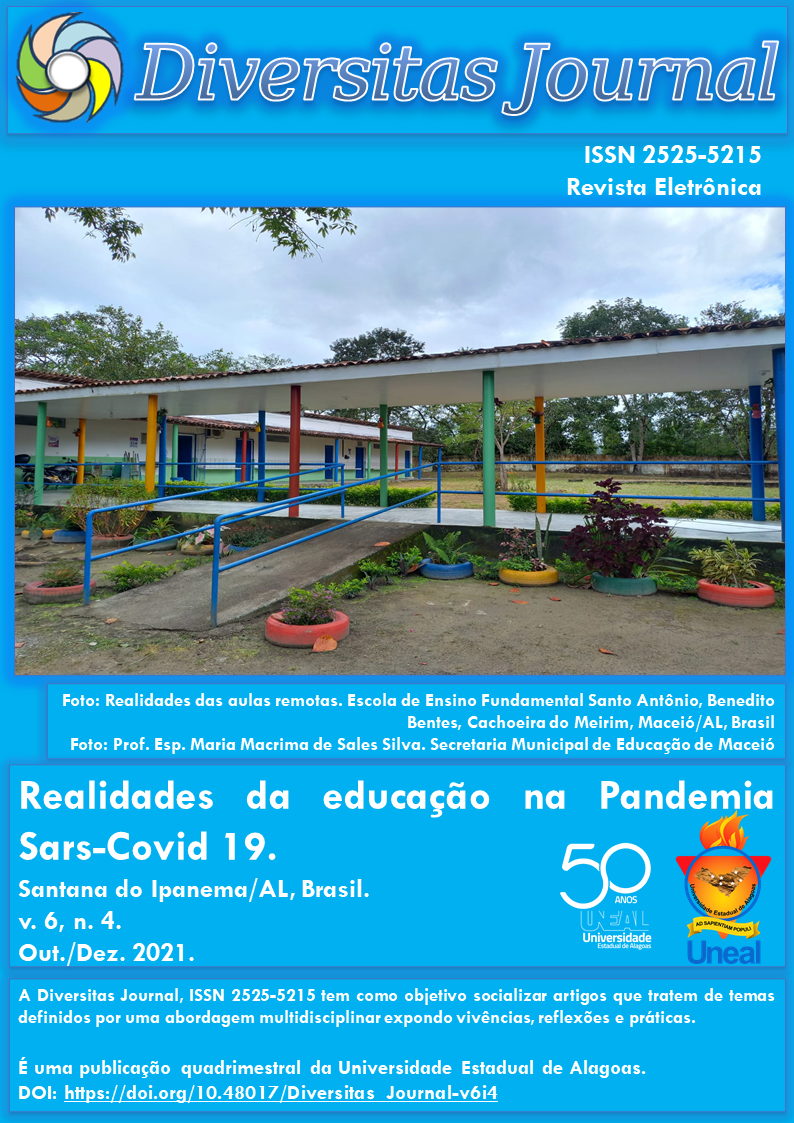Evaluation of Fermentative Losses and Dry Matter Recovery from Different Total Feed Silages
DOI:
https://doi.org/10.48017/dj.v6i4.1704Abstract
ABSTRACT: The objective of this research was to evaluate the rates of fermentative losses and the recovery of dry matter from different silages of total feed mixture. The total feed mixtures consisted of diets based on forage palm, elephant grass, gliricidia and other ingredients such as sugar cane bagasse, corn bran, soybean meal and urea. 25 experimental silos were made, distributed in a completely randomized design, with five treatments and five replications. The treatments consisted of different mixtures of total feed. The diets were balanced to obtain isoproteic diets. The silos remained sealed for 90 days. After opening, the rates of losses by gases and effluents and the rate of recovery of dry matter from silages were evaluated. Analysis of variance was performed with the results obtained. The averages were compared using the Tukey Test, at 5% probability. The total feed silages composed of forage palm with sugarcane bagasse showed significantly higher values (P <0.05). Gas losses in forage palm silages, alone and in conjunction with elephant grass, as well as elephant grass silages, showed values close to 1% of DM losses. Elephant grass silages had lower effluent loss values (1.9803 kg / ton MV) than those found in forage palm silages and forage palm silages with sugarcane bagasse (2.7259 kg / ton MV and 2.4386 kg / ton MV, respectively). The dry matter recovery rates found in this experiment ranged from 87 to 98%. Forage palm silages, forage palm silages with elephant grass and elephant grass silages showed higher dry matter recovery rates (97.49%; 95.03% and 98.19%, respectively). The silage of forage palm with sugarcane bagasse is not indicated, due to the higher rate of losses.
Metrics
References
BOLSEN, K.K.; LIN, C.; BRENT, C.R.; FEVERHERM, A.M.; URBAN, J.E.; AIMUTIS, W.R. Effects of silage additives on the microbial succession and fermentation process of alfafa and corn silages. Journal of Dairy Science, v. 75, p. 3066-3083, 1992.
GONZÁLEZ, G.; RODRÍGUEZ, A.A. Effect of storage method on fermentation characteristics, aerobic stability and forage intake of tropical grasses ensiled in round bales. Journal of Dairy Science, v.86, n.3, p.926-933, 2003.
KUNG JR., L.; RANJIT, N.K. The effect of Lactobacillus buchneri and other additives on the fermentation and aerobic stability of barley silage. Journal Dairy Science, v. 84, p. 1149-1155, 2001.
MACÊDO, A. J. S.; SANTOS, E. M.; OLIVEIRA, J. S., et. al. Produção de silagem na forma de ração à base de palma. Revista eletrônica de veterinária. v. 18, n.9, 2018.
NEUMANN, M.; LEÃO, G.F.M.; COELHO, M.G.; FIGUEIRA, D.N.; SPADA, C.A.; PERUSSOLO, L.F. Aspectos produtivos, nutricionais e bioeconômicos de híbridos de milho para produção de silagem. Archivos de Zootecnia, v. 66, n.253, p. 51-58, 2017.
NEUMANN, M.; OLIBONI, R.; OLIVEIRA, R.M. et al. Aditivos químicos utilizados em silagens. Pesquisa aplicada & Agrotecnologia, v. 3, n. 2, mai-ago, 2010.
PEREIRA, R.G.A.; GONÇALVEZ, L.C.; BORGES, A.L.C.C. et al. Processos de ensilagem e plantas a ensilar. Embrapa Rondônia: Documentos 124. Porto Velho, RO, 2008.
SANTOS, E.M.; ZANINE, A.M.; OLIVEIRA, J.S. Produção de silagens de gramíneas tropicais. Revista Eletrónica de Veterinaria REDVET, v. VII, n. 07, p. 1-16, 2006.
STORM, I.M.L.D.; KRISTENSEN, N.B.; RAUN, B.M.L. Dynamics on the microbiology of maize silage during whole-season storage. Journal of Applied Microbiology, v.109, p. 1017-1026, 2010.
TAYLOR, C.C., KUNG Jr., L. The effect of Lactobacillus buchnneri 40788 on the fermentation and aerobic stability of high moisture corn in laboratory silos. Journal of Dairy Science, v. 85, p. 1526-1532, 2002.
VIEIRA, F.A.P.; BORGES, I.; STEHLING, C.A.V. et al. Qualidade de silagens de sorgo com aditivos. Arquivo Brasileiro de Medicina Veterinária e Zootecnia, v. 56, n.6, p.764-772, 2004.
ZANINE, A.M.; SANTOS, E.M.; DOREA, J.R.R.; DANTAS, P.A.S.; SILVA, T.C.; PEREIRA, O.G. Evaluation of elephant grass with addition of cassava scrapings. Revista Brasileira de Zootecnia. v.39, n.12, p.2611-2616, 2010.
Downloads
Published
How to Cite
Issue
Section
License
Copyright (c) 2021 Fúlvio Macio Correia de Moraes, Ana Paula Maia Santos

This work is licensed under a Creative Commons Attribution 4.0 International License.
The Diversitas Journal expresses that the articles are the sole responsibility of the Authors, who are familiar with Brazilian and international legislation.
Articles are peer-reviewed and care should be taken to warn of the possible incidence of plagiarism. However, plagiarism is an indisputable action by the authors.
The violation of copyright is a crime, provided for in article 184 of the Brazilian Penal Code: “Art. 184 Violating copyright and related rights: Penalty - detention, from 3 (three) months to 1 (one) year, or fine. § 1 If the violation consists of total or partial reproduction, for the purpose of direct or indirect profit, by any means or process, of intellectual work, interpretation, performance or phonogram, without the express authorization of the author, the performer, the producer , as the case may be, or whoever represents them: Penalty - imprisonment, from 2 (two) to 4 (four) years, and a fine. ”


















